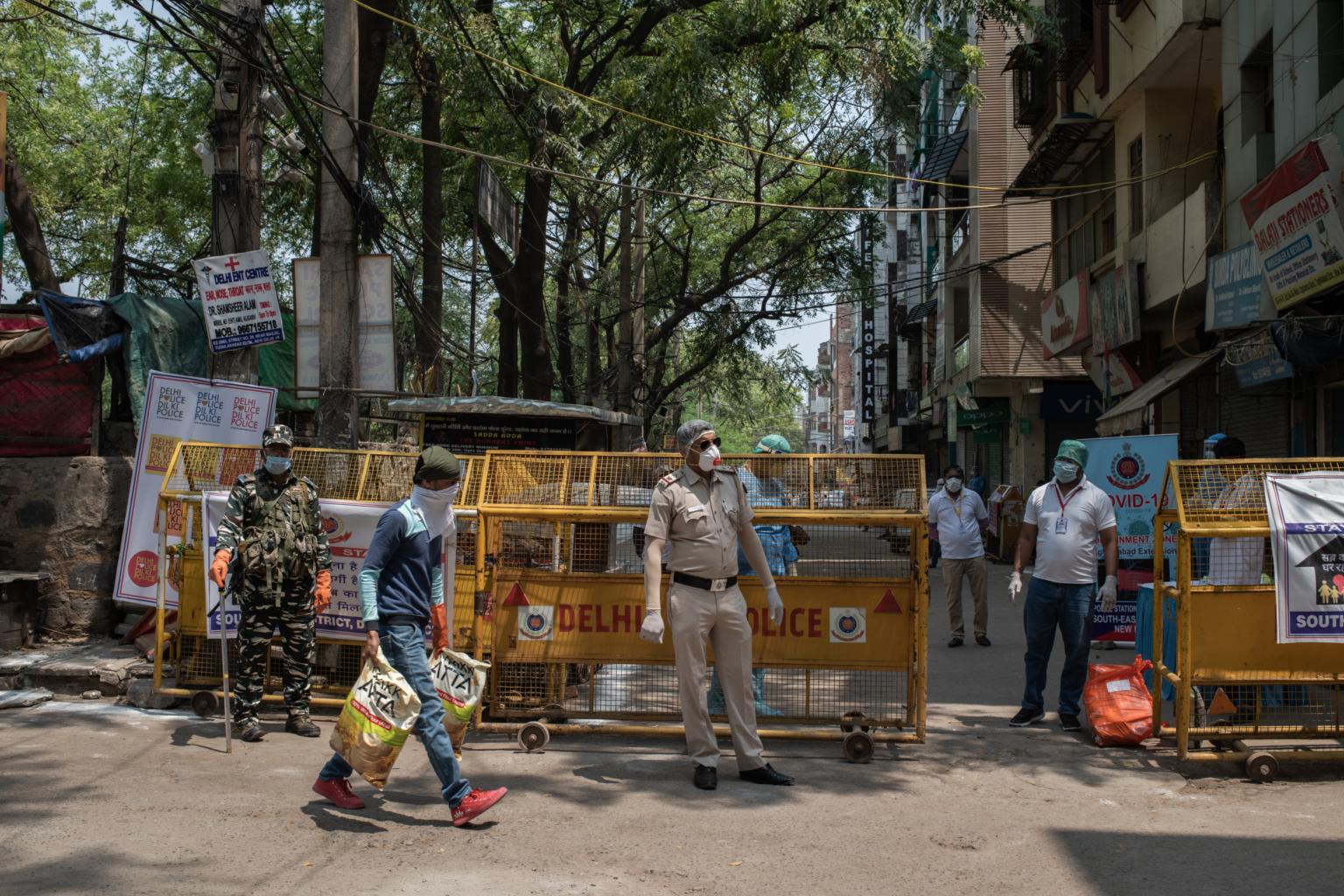Coronavirus: India's lockdowns complicate economic recovery
Sign up now: Get insights on Asia's fast-moving developments

Authorities in Kerala, India, are thinking of imposing a fresh lockdown after it recorded an increase of over 1,000 cases on July 22, 2020.
PHOTO: NYTIMES
Follow topic:
NEW DELHI - As India struggles to bring coronavirus cases under control, city or state-specific lockdowns have complicated economic recovery for the South Asian country, which at one point was the world's fastest growing economy.
Cities and states have been going in and out of lockdowns as the local authorities rush to control the Covid-19 spread in the country, which is now the world's third most affected, after the US and Brazil.
The central state of Bihar, along with some north-eastern states like Sikkim, are among a small clutch of states currently under a complete lockdown, with varying degrees of strictness. In Sikkim, people are only allowed to go out for essential needs, while Bihar is allowing agricultural and industrial activity.
The authorities in the southern state of Kerala, an early success story, are thinking of imposing a fresh lockdown after it recorded an increase of over 1,000 cases on Wednesday (July 22).
Others are coming out of lockdowns of anywhere between three and 10 days.
Life has been slowly returning to normal in IT hub Bengaluru, which reopened on Wednesday after a week-long lockdown.
The lockdown cost Bengaluru traders and industry 50 billion rupees (S$930 million), according to the Federation of Karnataka Chambers of Commerce and Industry.
The cessation of activity aside, uncertainty, more than anything else, is complicating recovery, said Mr Mahesh Vyas, managing director and CEO of Centre for Monitoring Indian Economy.
"The uncertainty associated with lockdowns being imposed today and removed tomorrow will have a direct impact on the recovery process because no enterprise can start operations without being sure of whether a lockdown is being imposed," said Mr Vyas. "Many enterprises have people who come from a distance... Those people will be hesitant to come to work. Similarly, if a company produces goods, there is uncertainty of being able to deliver tomorrow or receive raw materials."
He added that India had seen a rebound since a countrywide lockdown was imposed by the federal government in March, bringing economic activity to a complete halt.
The lockdown has been lifted in stages since mid-May with industries and businesses first opening, followed by domestic flights and train services. Hotels, malls and restaurants too have opened.
"The worst (economic distress) was April and May. There was a rebound in June," said Mr Vyas, although he added that the economy seemed to be "stagnating" at that level.
India was facing a slowing economy and a problem of jobless growth even before the coronavirus pandemic erupted and upended the global economy.
Growth had reached a six-year low of 4.7 per cent in the final quarter of last year.
While assessments are still ongoing on how much the near two-month lockdown slowed down the spread of the pandemic, there is little doubt it hit the economy hard, with hundreds of migrant workers losing their jobs, demand dropping and businesses and industries forced to shut.
The Indian economy is expected to contract between 5 and 10 per cent this fiscal year, the poorest performance in nearly four decades, according to various assessments.
"Labour crisis, disrupted supply chain, closed international export market and risk aversion by banks to disburse credit to struggling corporate India, ensure we are still quite a few months away from early signs of revival in the Indian economy," said Mr Rishi Sahai, managing director at Cogence Advisors
"With a fiscal deficit already ballooning to 5 per cent of GDP in the current year the government of India has little headroom left to fund a bailout through tax and fiscal incentives."
Still the federal government has maintained that small signs of revival are apparent with predictions that growth would pick up next year.
The Ministry of Finance macroeconomic report for June 2020 said activity had "picked up" in certain areas in May and June, with real activity indicators like electricity and fuel consumption, movement of goods, and retail and financial transactions ticking up.
Prime Minister Narendra Modi revealed on Wednesday in a talk that India had attracted more than US$20 billion (S$27.7 billion) in spite of the pandemic between April and July, and said India could help "power the global economy".
But optimism is tempered by the assessment that the country faces a long and hard economic recovery.
Consumption, a key driver of the Indian economy, has been hit by job losses and salary cuts.
Businesses, particularly the small and medium sized, are struggling to overcome the disruptions caused by the pandemic in spite of the government stimulus package.
DBS Bank economist Radhika Rao in a note assessed that 7 per cent of the districts in the economically important states of Maharashtra, Tamil Nadu and Gujarat, among others, account for 70 per cent of Covid-19 cases.
"Central to recovery hopes is how fast the curve can be brought under control," she said, adding that much depended on how much rural demand and farm output will act as a counter-balancing buffer for a slump in non-farm output.
She noted that if more states go in for lockdowns, "this might pose renewed supply chain disruptions as well as uncertainty for manufacturers, including automakers, OEMs (original equipment manufacturers) , electronics et cetera".
"Instances of a second wave in parts of Asia, also point to challenges ahead."

